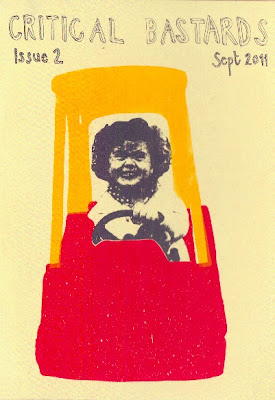At first within Mapplethorpe's flowers, the viewer, if familiar with his work, will notice the bright colours and contradicting backgrounds. This, compared with his perfectly sculpted with darkness nudes is a complete transition from the normal for Mapplethorpe. Firstly, the use of colour following onto a complete change in subject. The usual thoughts on Mapplethorpe are sculpted black and white nudes, S&M scenes, explicit racial blending and homoerotic messages. Although the flowers at first may appear to be simply stunning pieces of nature, with more study we can read the image properly revealing these images are more like his previous work than we first imagined. To begin with the flowers used, all except one ‘tulip’, are detached from the main plant itself, no longer growing as a whole but trapped and contained in vases, bowls etc. The growth cycle of that particular group of beings is over. The original bulb is lost. Certain flowers are contained and thrust into small surroundings or simply cut at the stump. This leads to a feeling of having no original attachment to anything beneath the stem itself, no original purpose is left. Arresting the flowers sexual organs, what they are losing is the actual process of fertilization. The flowers themselves are the sexual organs of a plant, taking the rest of the plant away serves a purpose, making these prints much more similar to Mapplethorpe’s nudes than we first expected. The flowers themselves are never linked to social morality, the life span of humans cannot be compared, every petal is present, and none withered, all intact and blooming with colour. Some of the flowers are leaning to the side, showing the fragile state of them, even in these images for example, Parrot Tulips. 8 kB. RobertParrot Tulips. 8 kB. RobertParrot Tulips. 8 kB. RobertParrot Tulips. 8 kB. Robert560 × 436 - Robert Mapplethorpe is very well know of making impressive portraits, ...
parrot tulips, they sit with the greatest of ease, no support almost like they have decided to move this way, obviously set there by Mapplethorpe. Some are in their engorged state, standing tall and filled with the liquid that supports them which makes them into solid objects much like the male anatomy. The setting of the flowers gives nothing away to the audience, no thought of them being inside, apart from the few which feature a vase which could be looked at as an indoor plant, nothing is given away on the landscape they are positioned in. No clue to the surroundings, conditions or the weather. This withholding of information gives no insight to the scale of the sexual organs or flowers, letting us compare it to the human body rather than thinking of it as a small flower, fetishism as a sexual organ. Mapplethorpe's other flower series, ‘Black Flowers’ , consisted of black male models holding flowers: this was a direct symmetry to the penises within his nudes, when featured are flaccid in direct compassion to the engorged sexual organs of the flowers. Taking the seemingly normal to explicit levels, concealing the human form in a flaccid state, even though the erect penis is not present within the work, it is replaced with the metaphor of the flower. It compels the viewer to compare the flaccid penis to the assertion of the flower cut at its root. Even when the male genitals and the flowers are not directly in the same print, there still is a correlation and cohesion through Mapplethorpe's work. For example, the photograph of Michael, 1983 , where the model is placed in white tights against a black wall, once again using darkness instead of the light, is showing the contours of the models genitals making the piece arabesque, which is when the contours and geometric stylising is repeated in the prints. This reminds us of the 1982 Orchid , where the white vase once again is surrounded by darkness, the contours of the vase compared to the lines and curves of the models genitals concealed. This also happens in the Mark Stevens print, where the model displays his genitals on a square stone, almost like a sacrificial offering. This reflects Mapplethorpe's Eggplant 1985 , where the phallic object is bathed in darkness.
When we think of flowers we usually, as a society think of femininity: an iconic image of womanhood. Used as metaphors in countless works of literature and poetry for example Emily Dickson or Georgia O’Keeth, with her symbolic flower paintings of woman. This is another reason why Mapplethorpe's flower prints stand out as flowers usually associated if with any piece of anatomy, it is the females. Mapplethorpe showing the flowers engorged and erect takes the classic flower as a male symbol of genitalia. Mapplethorpe's desire was for the audience to appreciate the male anatomy as fragile organs and delicate forms as much as the female organs but also with the ability to thrust engorge and have an assertive strength. Mapplethorpe's flowers are some of his most sexual pieces he has created, but due to the use of the delicate plant life to offset the explicit, the pieces are far less offensive that one might have expected. Flowers are innocent and fragile, but the meaning of what Mapplethorpe was striving for is lost, lost in the beauty of the images. The flower series will now and always be one of the strongest symbolic metaphoric pieces of photography that has been created.


































